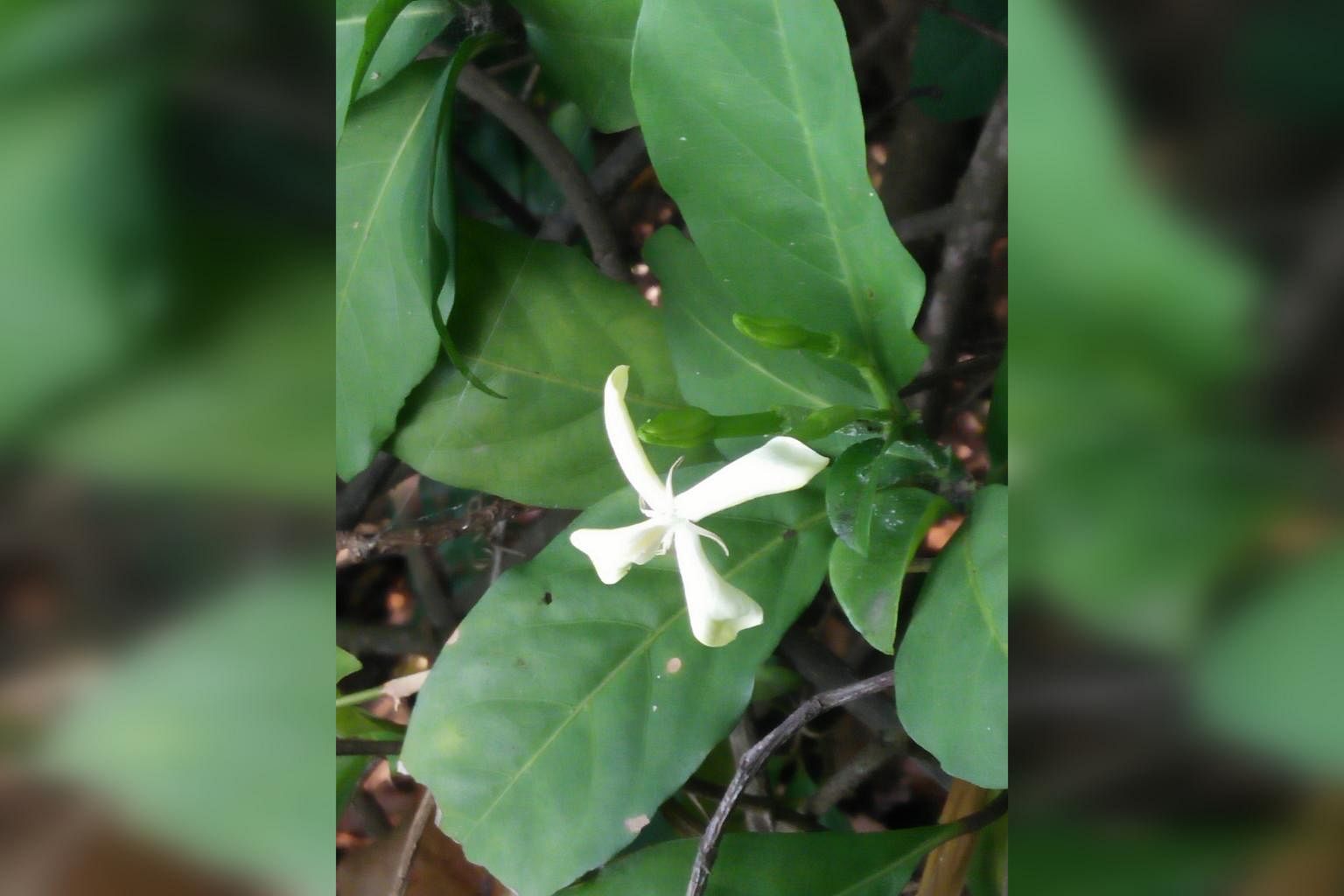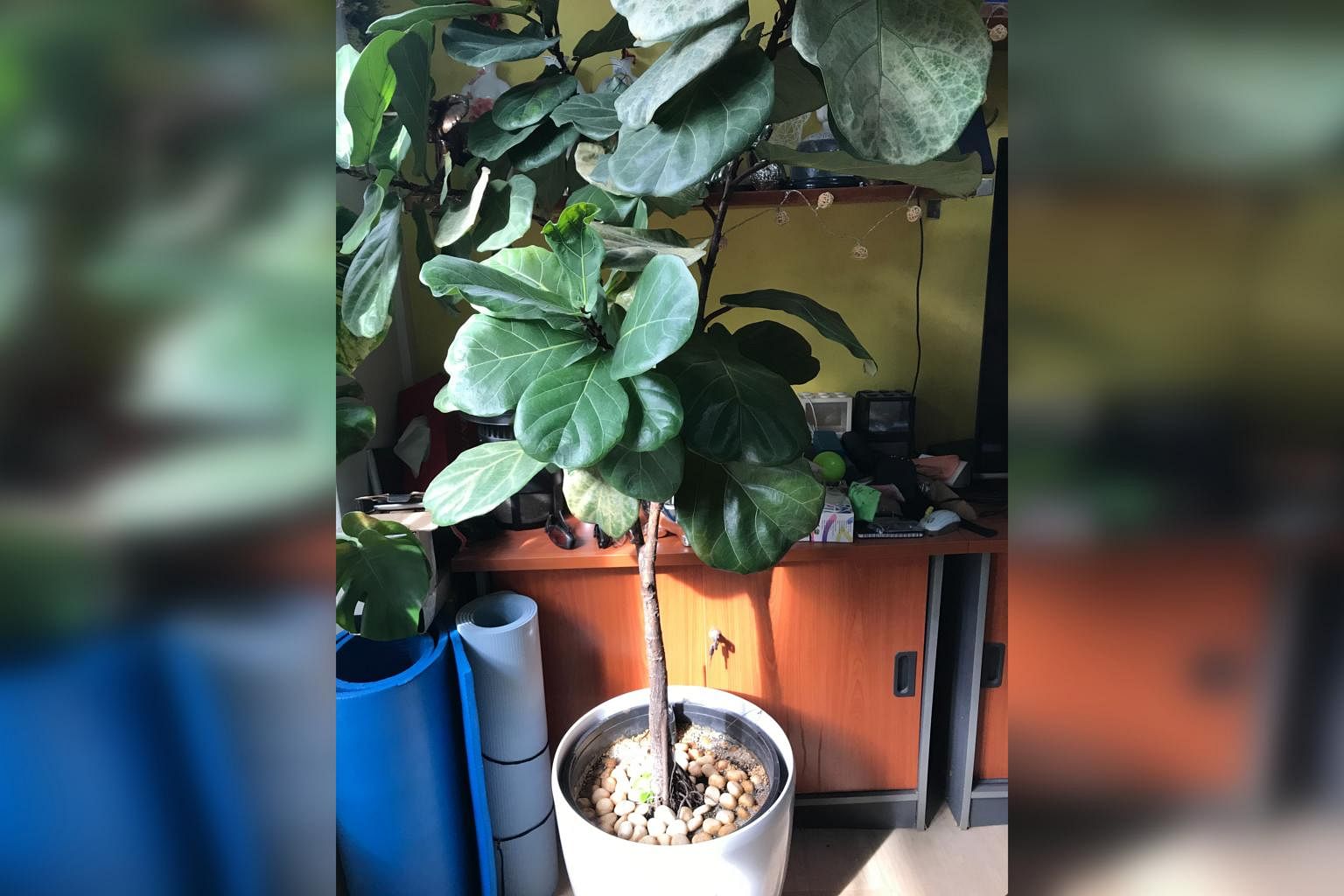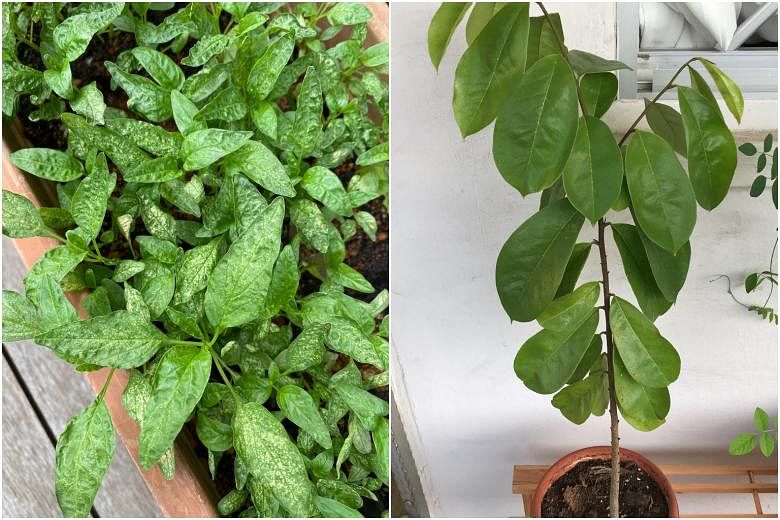Bayam may be infested with spider mites
I received a packet of bayam seeds. The seedlings that sprouted seem to have white spots. I have used neem oil on the plants as well as a bonemeal fertiliser. Are the plants diseased?
Cheah Chew Ping
The speckling pattern on the leaves of the bayam plants may indicate a spider mite infestation. Turn the leaves over and see if you can find small reddish specks that move around.
Spider mite infestation occurs when plants are subjected to water stress, where they are allowed to dry out previously or grown in wet areas. The pests can also infest plants that are grown in a windy area with very dry air, such in a high-rise apartment.
It is best to provide optimal growing conditions so that plants are strong and able to ward off infestations.
Spider mite infestations may be managed by spraying plants with a castile soap solution, summer oil or neem oil which suffocate them. Spraying the plants regularly with water can help to wash pests off too.
Sapling is likely the soursop plant
This plant started to grow in one of my pots, but it was not planted by me. What is it?
Shawn Seah
From the growth habit and its leaves, it appears the sapling may be the soursop (Annona muricata). Ask your neighbours or relatives to see if they have sown some seeds after eating a soursop fruit.
Note that the plant should be grown in a sunny location and in well-drained soil for best results.
Soursop grows as a small tree over time and does best if it is planted in the ground. As natural pollinators may be absent in some gardens, you may need to perform hand-pollination of the flowers to encourage fruit production.
Spiny shrub likely a species of Oxyceros

This climber has thorns, but its single flower was fragrant. Its fruit ripened to a black hue. Is the plant poisonous?
Casey Wang
The plant appears to be a species of Oxyceros. The Oxyceros longiflorus variety is likely the one grown in Singapore. Commonly known as Akar Berdara Laut, it is a native plant of Singapore that belongs to the same family, Rubiaceae, as the ixora.
The plant has spines on its stems and produces scented flowers that emit a fragrance similar to jasmine. The petals are white and turn yellow when mature.
There is little information available about its toxicity. But handle the plant with care due to its spines.
Orchid may be infested with scale insects
My orchids' leaves have brown spots that look like sesame seeds. I used a water-soaked cloth to scrap the spots off, but it is very tedious. Are there other ways to get rid of them?
Jane Ng
It appears that your orchids may be infested with scale insects, which are common sap-sucking pests in such plants.
The application of low-toxicity pesticides like neem oil and summer oil is quite effective on scale insects - they act by covering and suffocating the pests. But regular applications, which must be thoroughly applied with good coverage, are essential for effective control. Scale insects can hide in the folds and tight corners of plants, making them easy to miss.
Yellowing and dropping of leaves in fiddle-leaf fig plant a normal phenomenon

I have a 2m-tall fiddle-leaf fig plant. It has been growing in a self-watering pot over two years and is near the bay window. Recently, I notice some leaves fading and turning yellow among the lush green ones. Some other leaves turned brown and dropped off. What causes the fading and yellowing of leaves and how can I improve the plant's health?
Joseph Kok
Are the affected leaves located lower on the plant and older in age? If it is just a few leaves, it may be a normal phenomenon where the plant sheds older leaves and produces new ones to replace them.
It appears that your plant is rather large and growing in a small container which, in turn, will dry out quite fast. A plant that has undergone drought stress may exhibit the yellowing of older leaves that are shed eventually.
Ensure your plant is grown in a large enough pot and is hydrated at all times. Do not allow it to dry out excessively.
• Answers by Dr Wilson Wong, an NParks- certified practising horticulturist, parks manager and ISA-certified arborist. He is the founder of Green Culture Singapore and an adjunct assistant professor (Food Science & Technology) at the National University of Singapore.
• Have a gardening query? E-mail it with clear, high- resolution pictures of at least 1MB, if any, and your full name to stlife@ sph.com.sg. We reserve the right to edit and reject questions.

